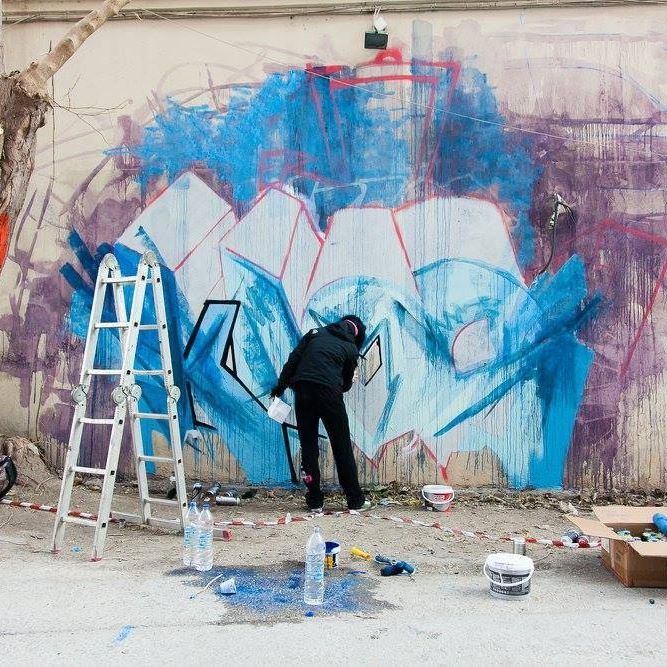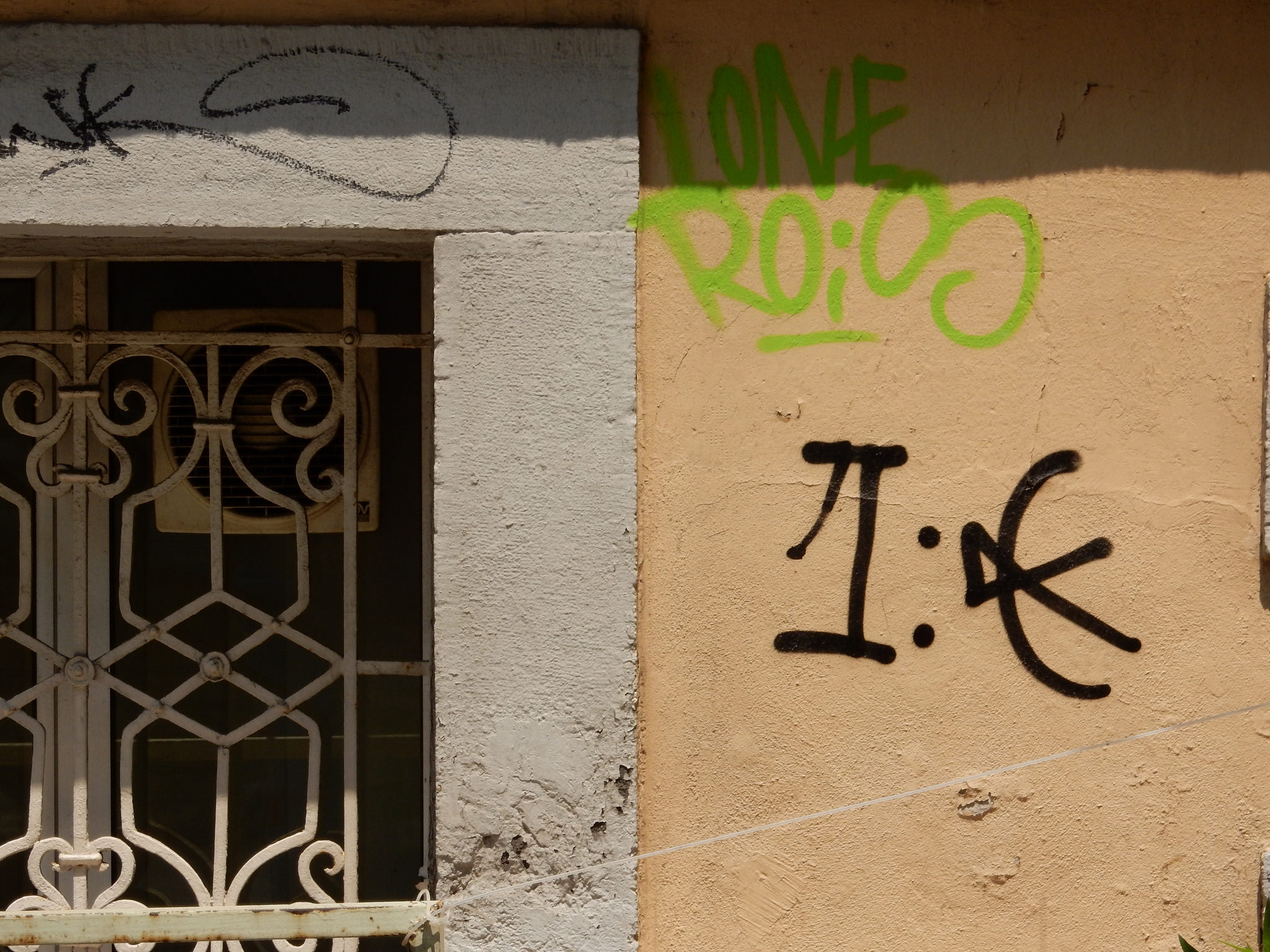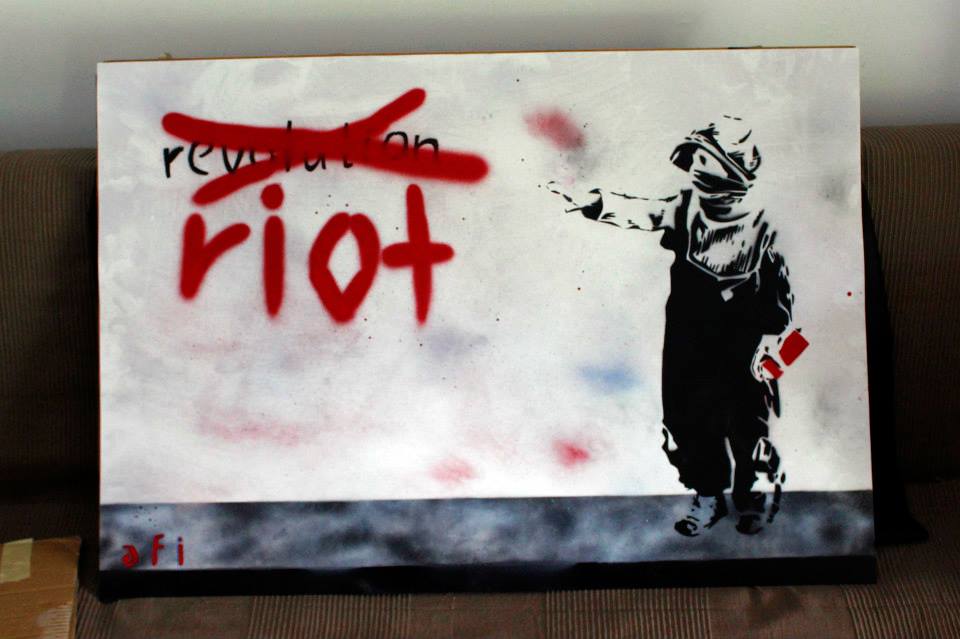Oré is one of the many international artists that have paid Athens a creative visit in the past years. Yet, his connection with the city is not a fleeting one but rather something that has been building for 30 years. Spending a few weeks of every year in Athens he has left quite a few marks on its walls and is involved in local events such as the Meeting of Styles street art festival. Read his interview to find out about his creative development towards his present signature wooden Quetzalcóatls, his impressions of the Athens street art scene and how it compares to the one in France.
When did you first get involved in the graffiti/street art scene and how did you arrive at the particular style that you use now?
I began to paint graffiti in 1989. For many years, I disseminated my name displaying lettering on all kind of materials that the town could offer me. Nevertheless, after seven or eight years of pure graffiti, a series of fortunate events impacted my style. Graffiti was developing and people were already spreading tags throughout the country. At the end of the 90s people grew tired of tags and stopped paying attention to what they saw on the walls. I started to create a more personal aesthetic. my travels to mexico profoundly influenced me. I discovered pre-Colombian art and became equally interested in arabic letters. For me, the link between tags and calligraphy is evident. Like lots of graffiti writers in France, I read Hassan Massoudy’s calligraphy books. So I studied Arabic calligraphy to add it in my murals. During my different trips to Mexico, I discovered the “feathered snake” called Quetzalcóatl, which will become an essential feature in my pictorial universe. I decided to use Quetzalcóatl in my paintings instead of painting letters. It was an evolution, from Graffti writing to street art, I’d say. In addition to my murals and exhibitions, I paste up my wooden snakes on the walls of the big cities of France (Paris, Lille, Marseille, Montpellier, Toulouse, Rennes, Lyon…) as well as in the streets of international metropolises (Athens, Barcelona, Berlin, Brussels, Balboa, Hamburg, Mexico, Vancouver). The influence of invader is important on this project. With the pasting up I still have my artworks in the very center of the towns, which is not possible now with pure graffiti because they are removed quickly. But the wooden pieces could stay a long time.
When did you first come to Athens and why?
Greece is very bonded with my family story. My parents are both French but by chance they met in Greece in 1964. And when they came back to Greece in 1981 with their 3 children, my oldest sister met a greek guy on a beach. She left France for him. And she’s been living in Greece for almost 30 years. So I have 2 greek nephews. And my sister now has the Greek nationality. My father also lives there since he retired. So i’m used to coming to Greece for 30 years. I come one or twice per year, mostly short term journeys. I have stayed from one week to 1 month and an half.
Which parts of Athens do you work in?
In Athens, I painted in Exarchia, because it’s the most active area. And I like this neighborhood. But it’s quite different with my wooden pieces about Quetzalcóatl. I pasted up those Quetalcoatls in the center (Ermou street, Syntagma square), and Plaka, Monastiraki, also Exarchia. In the 90s, I painted some silver styles on the line 1 (the green one), to Piraeus, but it’s a long time ago…
How do you pick the spots to put them up on?
I have 2 ways to pick the spots. First, I choose the most visible spots in town. Mostly I pick spots for pedestrians, because my pieces are small. After, I pick also spots because I like the wall, the architecture, the atmosphere of the street. I need to paste up around 30 pieces per town. Well, it depends of the size of the city of course. for Athens, I need to have around 40 pieces to give a good visibility.

Mural on the door of Stigma lab where Oré organized the exhibition “They come from the West” in December 2012
Where are you usually based and how would you say the graffiti and street art scene in your hometown compares to that of Athens?
I live in Normandy, France. In France, graffiti and street art appeared earlier than in Greece. So the scene has a lot of old timers. In Greece, hip-hop culture is followed by very young people mostly. For example, at the MOS [meeting of styles], there were mostly “teenagers”, people from 15 to 25 years old. In France in such event, you’d have seen families with babies and kids. Because people of 30-40 years old are involved in graffiti for 15-25 years. Here in Athens this generation doesn’t exist yet.
About aesthetic and political issues, the big difference is how, since the murder of Alexis by the police in December 2008, graffiti and street art became like a “weapon” for the youth to express what they feel about this society. And with the collapse of the economy, that matter grows. I think the Greek scene is much more political than France, definitely. The Greek youth has no more hope. They have no job. They can’t imagine a future, with a family, a professional project. The political system is almost destroyed. The neo-nazi party grows. Their milicia attacks immigrants. You can see more and more poor people and junkies in the streets every day. How do you want to build your life in a country like this? Nevetheless, and due to this drama, this youth is more politically involved than the previous generation. They see how capitalism can destroy a people. The previous generation lived their dream to become Western European: buying Ikea furniture, big car, having a flat or a house to build, shopping after work, and living with credit terms. But in 2013, all of that is past. Greece is “a laboratory of the worst”, about how modern capitalism can damage a whole country.
I like this mix of political issues and graffiti. Street artists and graffiti writers use the public space to claim justice in this country. When people fight for more justice or more liberty, like in may 68 France, in Oaxaca (Mexico) in 2006, or during the Arab Spring, walls become the voice of the people. The youth reclaims the street. And now in Athens, we can observe this process.
Anything else to say about Athens?
It’s crazy how the city changed from the 90s until now. In the 90s it was very peaceful. No homeless, less cops, less drugs, people smiling. It was another world for a French guy.
—
This interview was conducted via email in June 2013.
Questions by Julia Tulke.








